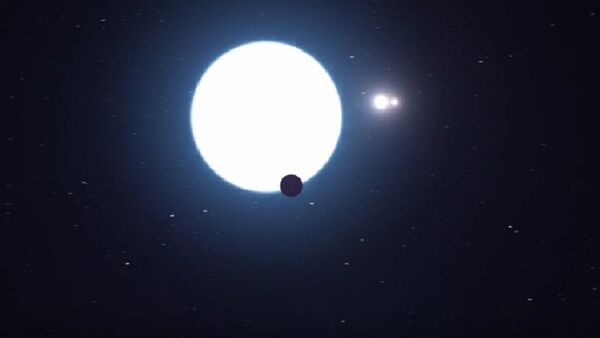"For about half of the planet's orbit, which lasts 550 Earth-years, three stars are visible in the sky, the fainter two always much closer together, and changing in apparent separation from the brightest star throughout the year," said Kevin Wagner, a first-year PhD student in Apai's research group and the paper's first author, who discovered the bizarre exoplanet.
UA astronomers have discovered a planet in a system of not two, but three stars. https://t.co/7yXbYHl21g pic.twitter.com/8epXr3APFi
— Univ. of Arizona (@UofA) 7 июля 2016 г.
"For much of the planet's year the stars appear close together, giving it a familiar night-side and day-side with a unique triple-sunset and sunrise each day. As the planet orbits and the stars grow further apart each day, they reach a point where the setting of one coincides with the rising of the other — at which point the planet is in near-constant daytime for about one-quarter of its orbit, or roughly 140 Earth-years," Wagner added.
Planets in multi-star systems are of special interest to astronomers and planetary scientists because they provide an example of how planet formation functions in these extreme scenarios.





